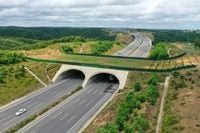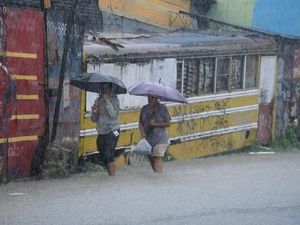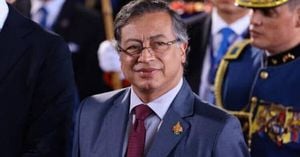The aftermath of a deadly truck crash in California has set off a political and legal firestorm, with federal and state authorities trading blame over the circumstances that allowed the driver, Jashanpreet Singh, to operate a commercial vehicle despite new federal restrictions. The crash, which occurred on October 21, 2025, on the 10 Freeway in San Bernardino County, left three people dead and at least four others hospitalized, according to reports from ABC News and Fox News.
At the center of the controversy is the timeline of Singh’s commercial driver’s license (CDL) upgrade and California’s compliance—or lack thereof—with a new federal rule. The U.S. Department of Transportation (DOT) had implemented emergency regulations on September 26, 2025, requiring states to verify the legal status of CDL applicants and explicitly barring illegal immigrants from holding such licenses. According to a DOT report released on October 24, 2025, California’s Department of Motor Vehicles (DMV) lifted restrictions on Singh’s CDL on October 15, 2025—just weeks after the federal rule took effect and on Singh’s 21st birthday.
Transportation Secretary Sean Duffy did not mince words in his condemnation of California officials, particularly Governor Gavin Newsom. "My prayers are with the families of the victims of this tragedy. It would have never happened if Gavin Newsom had followed our new rules. California broke the law and now three people are dead and two are hospitalized. These people deserve justice. There will be consequences," Duffy said in a statement quoted by The New York Post.
The DOT report alleges that California was warned about "significant compliance failures" in its CDL program and was given 30 days to audit and rescind licenses that did not meet the new standards. Despite this, the state’s DMV automatically upgraded Singh’s license from a restricted, non-domiciled CDL—originally issued on June 27, 2025—to a full license, removing all restrictions without verifying his legal status as required by the federal rule.
According to Fox News correspondent Bill Melugin, Singh had renewed his federal REAL ID weeks before the crash, which, in theory, should have served as proof of legal status. However, the DOT clarified that Singh was an asylum seeker and, had he returned to the DMV in person to upgrade his CDL, he "would have been subject to the emergency rule and found ineligible to retain the non-domiciled CDL due to Singh’s status as an asylum seeker." Instead, the license upgrade occurred automatically, bypassing the new federal checks.
The crash itself was harrowing. Dashcam footage captured the moment Singh, allegedly under the influence of drugs, plowed his red semi-truck into slow-moving traffic, first slamming into an SUV and then colliding with several other vehicles before the truck erupted in flames. The incident, which unfolded during the busy afternoon hours, claimed three lives and left at least four others with injuries requiring hospitalization. The names of the victims have not yet been released by authorities.
Singh, a resident of Yuba City, California, was arrested at the scene and booked into the West Valley Detention Center in Rancho Cucamonga without bail. He faces one count of driving under the influence causing injury and three counts of gross vehicular manslaughter while intoxicated. During his initial court appearance, Singh pleaded not guilty to all charges and was appointed a public defender. His next hearing is scheduled for November 4, 2025, with a Punjabi interpreter expected to assist, according to ABC News.
The legal proceedings are further complicated by Singh’s immigration status. The U.S. Immigration and Customs Enforcement (ICE) has lodged an arrest detainer against him, as authorities allege that Singh entered the United States illegally via the southern Mexico border in 2022. This revelation has fueled political debate and intensified scrutiny of California’s licensing protocols, especially in light of the federal government’s recent efforts to tighten regulations for commercial drivers.
Secretary Duffy, visibly frustrated, took to social media to reiterate his stance. "California upgraded this killer’s license LAST WEEK when my stricter rules were already in place! They ignored my emergency action and now three people are dead," he posted on X (formerly Twitter), amplifying the sense of urgency and blame directed at state officials.
California’s DMV and Governor Newsom’s office have so far not issued public responses to the federal accusations. The silence has only added to the chorus of criticism from federal authorities and some members of the public, who demand accountability for what they see as a preventable tragedy. The DOT’s report was explicit: "Gavin Newsom was explicitly warned California’s CDL program was dangerously broken. The USDOT’s emergency rule was issued to explicitly prevent drivers like Singh from getting behind the wheel of commercial motor vehicles."
The family of Jashanpreet Singh, meanwhile, has denied all charges against him, maintaining his innocence as the legal process unfolds. Their position was shared on social media and picked up by several news outlets, though the details of their defense remain to be fully articulated in court.
The broader implications of the crash are already reverberating through political and regulatory circles. For supporters of the federal crackdown on commercial licensing, the incident is a grim validation of their warnings about the risks posed by lax enforcement and loopholes in state systems. They argue that the tragedy underscores the need for strict adherence to federal standards, particularly when it comes to verifying the legal status of drivers entrusted with operating heavy vehicles on public roads.
On the other hand, defenders of California’s approach have historically argued that the state’s licensing policies, including those for undocumented immigrants and asylum seekers, are designed to promote road safety by ensuring that all drivers are trained, tested, and insured. They contend that blanket bans and rapid regulatory changes can create confusion and unintended consequences, especially when state and federal priorities collide.
As the investigation continues and the legal battle plays out in court, families of the victims and the broader public are left grappling with difficult questions about responsibility, accountability, and the intersection of immigration policy and public safety. The next court hearing, scheduled for November 4, will likely bring more details to light, but for now, the tragedy serves as a stark reminder of the real-world stakes involved in regulatory decisions and political disputes.
With three lives lost and a community in mourning, the fallout from the Ontario crash is far from over. The coming weeks will test not only the legal system but also the ability of state and federal officials to address the systemic failures that contributed to this devastating event.




